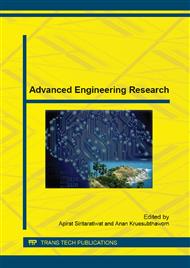p.393
p.397
p.402
p.406
p.410
p.414
p.418
p.422
p.427
A Low Frequency Wireless Power Transfer Using Parallel Resonance under Impedance Matching
Abstract:
Nowadays, there are more studies about the wireless power transfer (WPT) for mobile charging, electrical vehicles, implantable biomedical devices, and other applications. They (series resonance) commonly operate at high the self-resonant frequency (f0, several hundred kHz - several MHz ranges) based on magnetic coupling under impedance matching (IM). Operating at high f0 to increase the transfer distance, but high f0 (several MHz ranges) causes other parasitic losses of devices and the effectiveness to humans. In this paper, we propose a new method to design WPT using the parallel resonance under IM at low f0. The two coils are 10-turns with the radius of 6.2 cm. The efficiency (35.77 %) of the system under IM is achieved at the transfer distance of 10 cm and f0=20.388 kHz (low frequency), and the transfer distance can be increased by reducing f0.
Info:
Periodical:
Pages:
410-413
Citation:
Online since:
August 2015
Authors:
Price:
Сopyright:
© 2015 Trans Tech Publications Ltd. All Rights Reserved
Share:
Citation:


